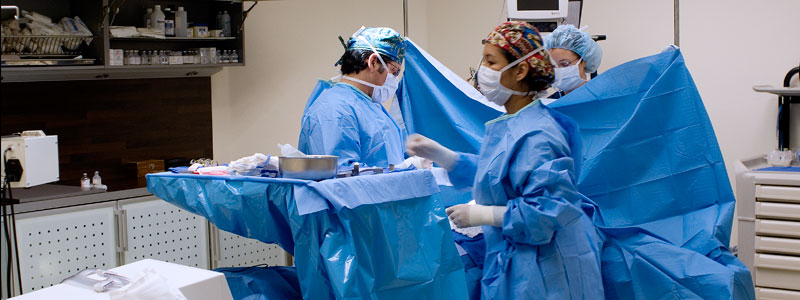Facelift
Eyelid surgery (known as blepharoplasty) is a corrective procedure that can reduce dark circles or “bags” under the eyes, remove excess wrinkles, and provide a more youthful appearance to the eyes. One of the first things noticed about a person is their eyes. During the aging process, wrinkles, lines, and puffiness contribute to a tired or aged appearance. The blepharoplasty surgery is often performed in conjunction with other facial procedures such as a face lift or rhinoplasty (nose surgery).
General Procedure
The standard procedure for a facelift commonly involves making small incisions just inside the hairline, following the contour in front of the ear, and continuing under the earlobe to the backside of the ear and to the lower scalp. Tissue and fat deposits are separated, the skin is stretched and tightened, and any excess skin is removed. If the neck line requires attention, an additional incision is made under the chin and the same procedure is again followed. Minuscule stitches are used to close the incisions and to reduce any chance of scarring. Metal clips or staples may also be utilized at the hairline.
A face lift may take several hours or longer depending on whether other cosmetic procedures are completed at the same time. Sometimes other procedures may be performed in separate appointments. There are several different facelift techniques that can be employed. Patients can discuss with their physician which method is best for them when they come in for their consultation.
Reasons for Considering a Facelift:
-
Sagging skin, muscles, and fat in the face and neck.
-
Excess skin and fat on the neck.
-
Sagging jaw line.
-
Crease lines along the nose, mouth, and chin.
Recovery Process
Immediately after surgery, the face is fitted with bandages in order to decrease the recovery time and to reduce swelling. Generally, post-operative instructions call for plenty of rest and limited movement in order to speed up the healing and recovery process. The stitches, clips or staples are normally removed within a week. Patients sometimes report some minor pain associated with surgery. Any discomfort can be treated effectively with oral medication. While complications are rare, patients can minimize potential problems by carefully following the directions given after the procedure.
|

